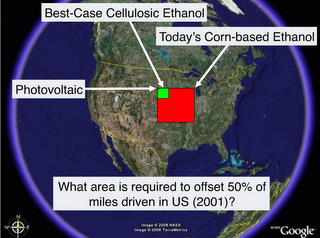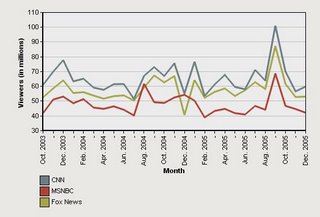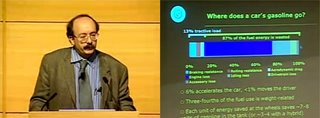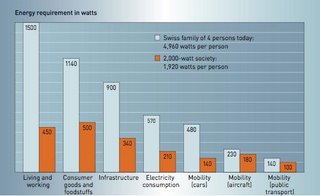An Inconvenient Truth Part 2: The Plan
 When I reviewed An Inconvenient Truth I was disappointed that it didn't lay out a plan to stop global warming. My disappointment has ended as Gore has laid out a fairly comprehensive plan in a speech at NYU. The speech is 1:30 long (of which about 1 hour is Gore) almost as long as the movie, and a worthy sequel to it. You can watch it, or read the transcript. Here are the highlights.
When I reviewed An Inconvenient Truth I was disappointed that it didn't lay out a plan to stop global warming. My disappointment has ended as Gore has laid out a fairly comprehensive plan in a speech at NYU. The speech is 1:30 long (of which about 1 hour is Gore) almost as long as the movie, and a worthy sequel to it. You can watch it, or read the transcript. Here are the highlights.
He calls for a carbon freeze which would limit CO2 emissions to where they are today. His explanation for it is that it is simple to explain and will lead to a more in depth plan in the future. He also calls for a pollution/CO2 tax that would replace the payroll tax (social security, medicare and unemployment, not to be confused with the income tax) to discourage pollution and encourage work. He wants a carbon market to allow carbon emissions to be traded. This will allow the most cost effective ways of reducing CO2 to be used.
He then lays out possible ways to make this happen. He likes the carbon wedges idea and thinks there are going to be lots of solutions needed to solve this problem, not just one silver bullet. He mentioned Amory Lovin's ideas on more efficient transport, flex fuel, plugin and hybrids cars, distributed energy, a smart grid, wind power, solar energy, stopping deforestation, increased use of biomass (25 by 25 movement), and more efficient buildings.
The only coal he would like see burned is carbon sequestered coal. He is not a fan of nuclear, not because of the waste but because he thinks they are too expensive to attract investors when electricity prices fluctuate so much and he is afraid of nuclear proliferation.
He also calls for a Carbon Neutral Mortgage Association to help fund the purchase of energy efficient window coatings and other conservation techniques on homes. I think this is a good idea and hopefully I will get a chance to write more on this later.
There were a few things that were suspiciously absent. There was no mention of fuel cells or hydrogen (yeah!). He made no calls for increased research and development by the government (boo!). He didn't call for CAFE standards to be raised. While he called for a CO2 tax, he didn't call for a gasoline tax. Maybe I am splitting hairs here, but I think a gasoline tax on its own is a good idea.
Overall I liked the plan. I think a carbon freeze might be unrealistic and overly expensive, but if it leads to a compromise I am all for putting it out there. I think the key is to have a carbon tax and a carbon market and he called for both of them. Many of the possible solutions he laid out were ones I have mentioned before. The only big solutions that I like that he didn't mention were Terra Preta and geo engineering.
The question left unanswered for me is, how would this affect the average American? How large of a CO2 tax are we talking? If we really did implement a carbon freeze, what would that make the price of CO2 per ton on a CO2 exchange market? What would be the likely impact on businesses?
There are trade offs to be made here and I would like to understand more what they are.



















